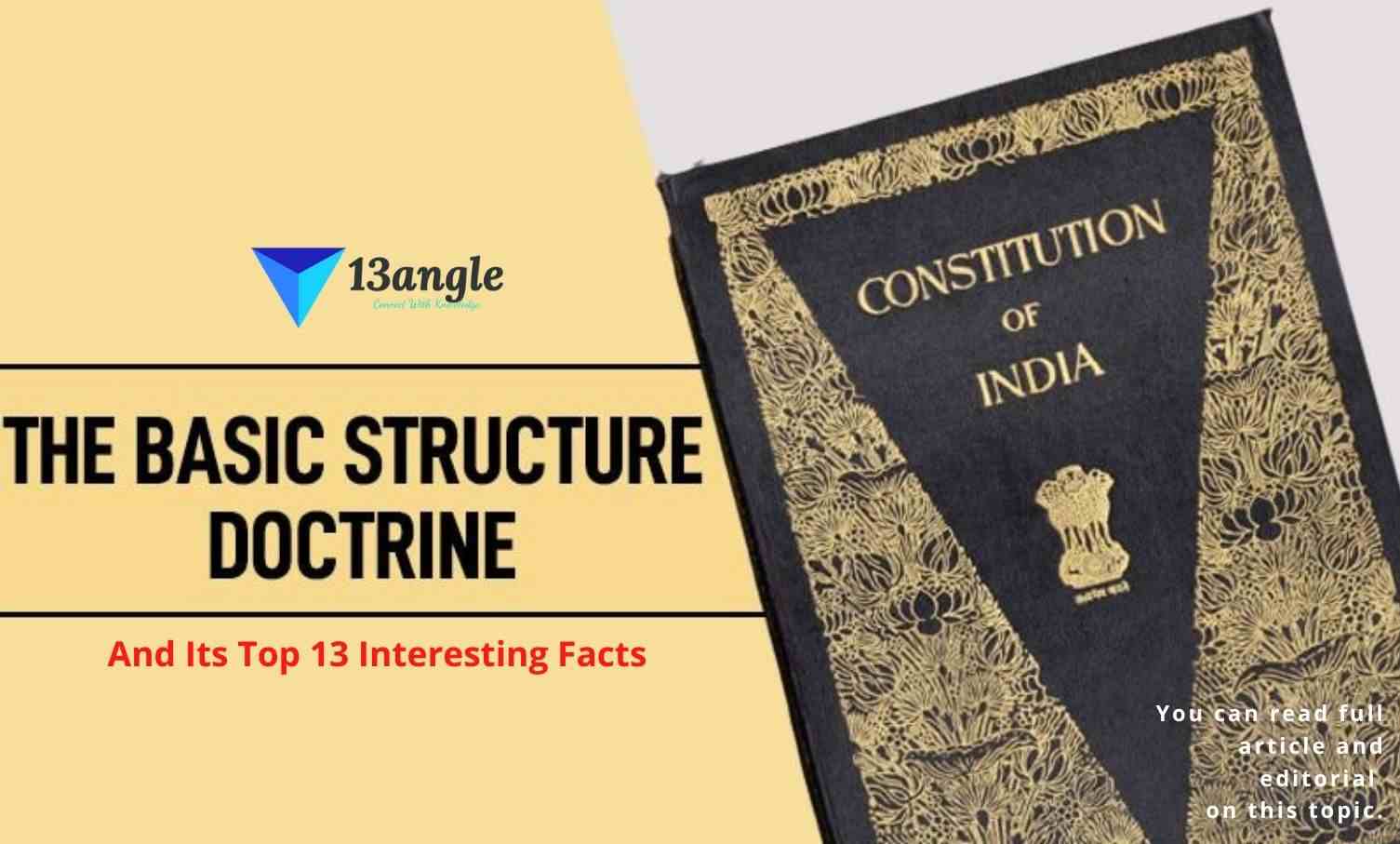
Introduction
Before the introduction of manufacturing on a large scale, workers and employers entered into personal contracts. Until then, there was no need for the development of any mechanism managing the relationship between workers and their employers. But after the establishment of the modern factory system, this relationship lost its significance as a result of large-scale industrialization, which enticed employers to reduce the cost of production in order to withstand the cutthroat competition on the market and increase their profits by using technologically more sophisticated means of production. This resulted in the emergence of a new class of workers who were completely dependent on their wages for their survival, a change that led to the emergence of a new class of workers who were completely dependent. The clash of interests between workers and their employers, as well as the distress of workers, led to the development of numerous trade unions.
A trade union is an organized group of workers who advocate for workers’ rights to fair pay, a safe workplace, reasonable hours, and other benefits for which they should be eligible in exchange for their labour. They act as a link between management and employees. Due to their direct influence on the social and economic life of employees, they have become a powerful force despite being relatively new institutions. To regulate and administer the operations of these labour unions, certain governing statutes are required. In India, the Trade Unions Act of 1926 is the primary statute for regulating and administering the operations of trade unions.
History Of Trade Unionism In India
In India, trade unions have evolved into an essential forum for voicing workers’ demands. They have also become one of the most prominent pressure groups, which is a coalition that seeks to influence the government in drafting legislation favourable to workers without aspirations of joining the government. After the end of World War I, trade unionism gained its definitive form as an institution. Trade unions in India are mostly the result of modern, large-scale industrialization and did not originate from pre-existing social institutions. The need for an organized trade union was first recognized in 1875 by various philanthropists and social workers such as Shri Sorabji Shapaji Bengali and Shri N.M. Lokhandey, whose efforts resulted in the formation of trade unions such as The Printers Union of Calcutta (1905), and the Bombay Postal Union (1905).
The establishment of textile and mill industries at the start of the 19th century in the presidential cities of Bombay, Madras, and Calcutta stimulated the foundation of industrial workforce associations in India. The Bombay Mill-Hands Association was formed in 1890 by N.M. Lokhande is India’s earliest labour organization. Several other labour associations and unions rose and grew in India in the years that followed, such as the Madras Labour Union, which is the first properly registered trade union and was founded by B.P. Wadia in 1918. In 1920, the country witnessed the growth of the Ahmedabad Textile Labourer’s Association in Gujarat, which became a union under the guidance of Mahatma Gandhi and is regarded as one of the strongest unions in the country at that time. Since the union followed the truth and nonviolence principles laid down by Mahatma Gandhi, it was able to obtain justice for the workers without disrupting the social order. In the same year, the first trade union federation, the All India Labour Union Congress (AITUC), was established in response to remarks made by the International Labour Organization regarding the negative influence of politics on trade unions and organizations on the growth of any economy.
Nationalist leaders like Mahatma Gandhi recognized the significance of the creation of an organized trade union and introduced the concept of trusteeship, which called for the participation of both employers and employees, in order to improve relations between them. According to the theory, those who are financially stable should own property and use it not only for their own benefit but also for the welfare of other workers who are less fortunate financially. Every worker should consider himself to be a trustee of other workers and work to protect the interests of those other workers.
A number of commissions also emphasized the creation of trade unions in India, such as the Royal Commission on Labour or Whitley Commission on Labour, which was established in 1929–1930 and made the recommendation that the issues brought about by modern industrialization in India are similar to those it caused elsewhere in the world and that the only remaining solution is the creation of powerful trade unions to relieve the labourers from their miserable conditions and exploitation.
Development Of Trade Union Law In India
Industrial relations development in India is significantly influenced by labour legislation. All of India’s labour laws have been based on the premise of establishing social fairness. The need for carefully constructed labour legislation in the nation was further fueled by the creation of the International Labour Organization to improve the status of labour throughout the world. Other internal forces like the Swaraj movement (1921–1924) and the royal commission on labour also opened the path for different labour regulations and prompted the constitution’s writers to include such rules that will assist workers. Under the constitution, labour is the subject of the concurrent list and both centre and state can make laws related to the subject. The different legislation on labour in the country are as follows:
Apprentices Act, 1961- The Act’s aim was to strengthen and enhance existing talents through both practical and theoretical training while promoting old skills.
Contract Labour (Regulations and Abolition), Act 1970- The purpose of the Act was to regulate the employment of contract labour and, in certain instances, to eliminate it.
Employee’s provident funds and miscellaneous Provision Act, 1952- The Act regulated the payment of wages to employees and ensured their social security.
Factories Act, 1948- The purpose of the Act was to protect the health of workers engaged in certain defined occupations.
Minimum Wage Act, 1948- The Act sought to establish minimum wage rates for occupations.
- Trade Union Act, 1926- The Act outlined the legislation pertaining to registered trade unions and provided for the registration of labour unions.
Indian Trade Union (Amendment) Act, 1947

- Labourers, especially those in the unorganized sectors, lack the ability to negotiate, which is a major factor in their exploitation. Only registered trade unions have the right to engage in collective bargaining. The Right of collective bargaining is provided only to those trade unions which are registered in India, there are legislations regarding the recognition of trade unions but there is no single legislation on the registration of trade unions. In 1947, the Indian Trade Union (Amendment) Act was introduced by the parliament in recognition of the necessity for a central law governing the registration of trade unions. The proposed legislation aimed to add Chapter III-A to the Trade Union Act of 1926, which enumerated the mandatory recognition requirements for any trade union. however, this Act was never implemented. Consequently, there is no law in effect in India that mandates the recognition of labour unions.
Registration Of Trade Unions
The Trade Union Act of 1926 was passed in 1926, although it did not take effect until 1927. The Act covers provisions about trade union registration, regulation, perks, and protection. Sections 3 to 14 of Chapter 2 of the Act address the registration of labour unions on Indian territory.
Section 3- Appointment of Registrars
Section 3 of the Act grants the appropriate government the authority to appoint a trade union registrar. Additionally, the appropriate government may appoint as many extra and deputy registrars in a trade union as it thinks necessary to carry out the Act’s aims.
Section 4- Modes of Registration
Section 4 of the Act specifies how the trade union is to be registered. Any seven or more seven members of a trade union may submit an application for the union’s registration, subject to the two conditions outlined in the section:
At the time the application is submitted, at least seven individuals must be employed in the establishment.
At the time the application is submitted, at least 10% of the employees or 100 members, whichever is fewer, must be employed by the establishment.
Section 5- Application of Registrars
Every application for registration of a Trade Union shall be made to the Registrar, accompanied by a copy of the Trade Union’s rules and a statement of the following particulars:
(a) the names, occupations, and addresses of the members making the application;
(b) the name of the Trade Union and the address of its head office;
(c) the titles, names, ages, addresses, and occupations of the office bearers of the Trade Union.
Section 6- Provision to be Contained in the rules of a trade union
Section 6 of the Act specifies the provisions that must be included in the rules of a trade union and provides that no trade union shall be recognized unless it has created an executive committee in line with the provisions of the Act and its rules specify the following:
- Name of the trade union;
- The object of the establishment of the trade union;
- Purposes for which the funds with the union shall be directed;
- A list specifying the members of the union shall be maintained. The list shall be inspected by office bearers and members of the trade union;
- The inclusion of ordinary members who shall be the ones actually engaged or employed in an industry with which the trade union is connected;
- The conditions which entitle the members to any benefit assured by the rules and the conditions under which any fine or forfeiture may be imposed on the members;
- The procedure by which the rules can be amended, varied or rescinded;
- The manner within which the members of the manager and also the alternative workplace bearers of the labour union shall be elective and removed;
- The safe custody of the funds of the labour union, an annual audit, in such manner, as may be prescribed, of the accounts thereof, and adequate facilities for the inspection of the account books by the workplace bearers and members of the labour union, and;
- The manner within which the labour union could also be dissolved.
Section 7- Power to call for further and require alteration of the name
Section 7 of the Act grants the registrar the authority to request information to ensure that any application submitted by a trade union complies with Sections 5 and 6 of the Act. In cases where a disparity is discovered, the registrar maintains the power to refuse the application unless the union provides the missing information.
This section also grants the registrar the authority to direct a trade union to alter or change its name if the registrar determines that the union’s name is identical to that of another trade union, or if its name is so similar to that of an existing trade union as to be likely to mislead the public or members of either trade union.
Section 8- Registration
According to Section 8 of the Act, if the registrar is entirely satisfied that a union has met with all the relevant provisions of the Act, he may register the union by registering all its details in accordance with the Act’s requirements.
Section 9- Certificate of Registration
According to Section 9 of the Act, the registrar shall issue a registration certificate to any trade union that has been registered in accordance with Section 8 of the Act, and such document shall serve as irrefutable evidence of the trade union’s registration.
Section 9A- Minimum requirement related to the membership of a trade union
Section 9A of the Act specifies the minimum number of members that must be present in a duly-registered union. The Sections mandates that a duly-registered trade union must always have at least 10% or one hundred of the workmen, whichever is less, subject to a minimum of seven, who are employed or utilized in an institution or trade with which it is affiliated.
Section 10- Cancellation of Registration
Section 10 of the Act gives the registrar the authority to withdraw or cancel the registration certificate of any union under any of the following circumstances:
- On an application made by the trade union seeking to be verified in such manner as may be prescribed;
- If the registrar is satisfied with the fact that the trade union has obtained the certificate by means of fraud or deceit;
- If the trade union has ceased to exist;
- If the trade union has wilfully and after submitting a notice to the Registrar, contravened any provision of the Act or has been continuing with any rule which is in contravention with the provisions of the Act;
- If any union has rescinded any rule provided under Section 6 of the Act.
Section 11- Appeals
In accordance with Section 11 of the Act, any union aggrieved by the registrar’s refusal to register or withdrawal of registration may file an appeal:
- In any High Court, if the head office of the trade union is located in any of the presidency towns;
- In any labour court or industrial tribunal, if the trade union is located in such a place over which the labour court or the trade union has jurisdiction;
- If the head office of the trade union is situated in any other location, an appeal can be filed in any court which is not inferior to the Court of an additional or assistant chose of a principal Civil Court of original jurisdiction.
Section 12- Registered Office
Section 12 of the Act requires that all notices and communications to a trade union shall be sent to its registered office. If a trade union changes the address of its registered office, it must notify the registrar in writing within fourteen days, and the registrar must record the new address in section 8 of the act.
Section 13- Incorporation of Registered Trade Union
According to Section 13 of the Act, every trade union registered in accordance with the provisions of the Act shall:
- Be corporate by the name under which it is registered.
- have perpetual succession and a common seal.
- Power to contract and hold and acquire any movable and immovable property.
- By the said name can sue and be sued.
Section 14- Certain Acts not to apply to registered Trade Union
The following Acts, namely: –
(a) the Societies Registration Act, 1860 (21 of 1860)
(b) the Cooperative Societies Act, 1912 (2 of 1912)
(c) the Companies Act, 1956 (1 of 1956),
shall not apply to any registered Trade Union and registration of any such Trade Union under any such Act shall be void.
Rights And Liabilities Of Registered Trade Union

From Section 15 to Section 28, the rights and duties of a registered labour union are specified.
Section 15- Objects on which General Funds may be spent
Section 15 of the Act lays down the activities only on which a registered trade union can spend its funds. These activities include:
- Salaries to be given to the office-bearers.
- The cost incurred for the administration of the trade union.
- Compensation to the workers due to any loss arising out of any trade dispute.
- Expenses incurred in the welfare activities of the workers.
- Benefits conferred to the workers in case of unemployment, disability, or death.
- The cost incurred in bringing or defending any legal suit.
- Publishing materials with the aim of spreading awareness amongst the workers.
- Education of the workers or their dependents.
- Making provisions for the medical treatment of the workers.
- Taking insurance policies for the welfare of the workers.
The Section also provides that the reason for non-contribution to the said fund and a contribution to the fund cannot be made as a criterion for admission into the union.
Section 16- Constitution of a separate fund for political purposes
To promote the civic and political interests of its members, Section 16 allows a trade union to establish a separate fund from contributions paid separately for these purposes. No union member can be required to contribute to the fund.
Section 17- Criminal conspiracy in Trade Dispute
Section 17 of the Act stipulates that no member of a trade union can be held accountable for criminal conspiracy as defined in subsection 2 of section 120B in relation to any agreement reached between union members to advance the union’s lawful interests.
Section 18- Immunity from civil suits in certain cases
Section 18 of the Act exempts trade union members from civil or tortious liability for acts committed in furtherance or contemplation of trade disputes.
Section 19- Enforceability of agreement
According to Section 25, restraint trade agreements are invalid. According to Section 19 of the Trade Unions Act of 1926, however, any agreement between members of a registered trade union that restricts trade operations is neither void nor voidable. However, this right is only available to recognised labour unions, while unregistered labour unions must adhere to general contract law.
Section 20- Right to Inspect the book of Trade Union
In accordance with Section 20 of the Act, the account books and the list of members of any registered trade union may be inspected by the members of the trade union at periods specified by the trade union’s bylaws.
Section 21- Rights of Minor to membership of Trade Union
Section 21 stipulates that a person older than 15 may join any trade union, and if he does so, he is entitled to all the rights accorded to the union’s members, subject to the limitations imposed by the union he joins.
Section 21 A- Disqualification of office-bearers of trade union
Section 21A of the Act specifies the circumstances whose fulfilment disqualifies a person from being a trade union member. The conditions laid down in the Act are as follows:
- If the member has not attained the age of majority
- If he has been convicted by any of the courts in India for moral turpitude and has been sentenced to imprisonment unless a period of five years has elapsed since his release.
Section 22- Proportion of office-bearers to relate to the industry
Section 22 of the Act stipulates that at least fifty per cent of a trade union’s members must be working in the industry or occupation with which the trade union is affiliated. According to this section, if a trade union is created for the welfare of agricultural labourers, then at least half of its members must be employed in agricultural operations.
Section 23- Change of Name
Section 23 of the Act specifies that any registered union may alter its name with the approval of at least two-thirds of its members and subject to Section 25’s requirements.
Section 24- Amalgamation of Trade Union
Section 24 stipulates that two or more labour unions may merge to form a single labour union, with or without dissolution or split of the fund. Such a merger can only take place if sixty percent of the votes cast are in favour of the proposal and fifty percent of the members of each trade union have voted in favour.
Section 25- Notice of change of name or amalgamation
- A notice in writing of every change of name and of every amalgamation which is duly signed by the Secretary and by seven members of the Trade Union changing its name, and, in the case of an amalgamation, by the Secretary and by seven members of each and every Trade Union which a party is thereto, should be sent to the Registrar.
- If the Registrar feels that the proposed name is identical to the name of any other existing Trade Union or, it so nearly resembles such name as it is likely to deceive the public or the members of either Trade Union, the Registrar may refuse to register the change of name.
- If the Registrar of the State in which the head office of the amalgamated Trade Union is situated is satisfied that the provisions of this Act have complied with the amalgamation shall be given effect from the date of such registration.
Section 26- Effects of Change of name and of amalgamation
The name change of a registered Trade Union shall not affect the Trade Union’s rights or obligations or invalidate any legal proceeding by or against the Trade Union, and any legal proceeding that could have been continued or commenced by or against it under its former name may be continued or commenced under its new name.
A merger of two or more registered Trade Unions shall not affect the rights of any of these Trade Unions or the rights of any of their creditors.
Section 27- Dissolution
If a registered trade union is dissolved, a notice of dissolution signed by seven members and the secretary of the trade union must be served on the registrar within fourteen days of the dissolution. If the registrar is satisfied that the dissolution was carried out in accordance with the rules of the trade union, the registrar may register the dissolution.
When a union has been dissolved but its bylaws do not specify how the fund is to be divided, the registrar may distribute the funds in any prescribed manner.
Section 28- Returns
Section 28 requires that all trade unions submit their annual returns to the registrar on or before the date specified by the registrar. The return includes:
- General Statement
- Audit report
- All the receipts and expenditures incurred by the trade union
- Assets and liabilities of the firm on the 31st day of December
Along with the general statement, the registrar must also receive a copy of the trade union’s regulations, rectified to the date of dispatch, as well as a statement detailing all amendments made by the union during the year referred to in the general statement.
When a registered trade union modifies its bylaws, the registrar must be notified no later than 15 days after the modification.
Regulations
Section 29 to Section 30 of Chapter 4 of the Act lays down the regulations which shall be imposed on the trade union.
Section 29- Power to make Regulations
Section 29 of the Act grants the competent government the authority to establish provisions to guarantee that the requirements of the Act are carried out fairly. Such regulations may provide for any or all of the matters, which are as follows:
- The manner in which a trade union or its rules shall be registered;
- The manner in which the registration of a trade union has to be transferred which has changed its head office;
- The manner of appointment and qualification of the person who shall audit the accounts of the registered trade union;
- Circumstances under which the documents kept by the registrar shall be allowed to be inspected and also the fees that shall be levied in lieu of the inspection so made.
Section 30- Publication of Regulation
- The power of making regulations conferred to the government is subject to the condition that such regulation has been made after the previous publication.;
- The date from which the regulation shall be given effect shall be specified in accordance with clause (3) of Section 23 of the General Clauses Act, 1897, and the date should not be less than three months from the date on which the draft of the proposed regulations was published for general information;
- The regulations which are made must be specified in the official gazette of India and it shall have the effect of an enacted law.
Penalties And Procedure
Sections 31 to 33 of the Trade Union Act outline the penalties and application procedure for a trade union that is subject to a penalty.
Section 31- Failure to submit returns
If a trade union is required by law to send a notice, statement, or document to the registrar, and if the rule does not specify a specific person within the union to provide such information, then in the event of a default, each member of the union’s executive will be subject to a fine of up to five rupees. If the default continues, the punishment may be increased to five rupees per week.
Any person who knowingly makes or causes to be made a false entry or omission in the general statement required by Section 28 of the Act is subject to a fine of up to 500 rupees.
Section 32- Suppling False Information regarding trade union
- Any person whom deceives a member of any trade union or any other person who purports to be part of the trade union,
- Gives a copy of the document with the pretext of it containing the rules of a trade union.
- Which he knows or has reason to believe that it is not a correct copy of such rules and alteration and,
- Any person with the like intent gives a copy of any document purporting it to be a copy of the rules of a registered trade union which is an unregistered union,
- Shall be imposed with fine which may extend to two hundred rupees.
Section 33 – Cognizance of offenses
Section 33 includes the provisions regarding the recognition of an offence. It states that no lower court than a presidency magistrate or first-class magistrate shall try an offence under the Act. courts can take cognizance of the offences under the Act only in the following cases:
- When the complaint has been made with the previous sanction of the registrar
- When a person has been accused under Section 32 of the Act, he shall be tried within six months of the commission of the alleged offence.
Collective Bargaining And Trade Dispute

Collective bargaining occurs when an organized entity negotiates with the employer and establishes employment terms through bargaining. Collective Bargaining is defined by the fact that it is conducted between interested parties and not by outsiders.
In its guidebook published in 1960, the International Labour Organization described collective bargaining as:
The terms of the agreement are used to determine the rights and obligations to which each party is bound during the course of employment.
Essential Condition For Collective Bargaining
Favorable Political and social climate- Every instance of collective bargaining in the past demonstrates that a favourable political and social atmosphere is a necessity for collective bargaining.
Trade Union- In any democratic nation, such as India, which acknowledges the right to free speech as a basic right, the freedom to form a trade union is a direct corollary, and all employers should thus recognize trade unions and their representatives.
Problem-Solving Attitude- It indicates that while negotiating and putting up their respective concerns, both sides should take a problem-solving mindset and attempt to amicably resolve the issue without trying to put the other party at a disadvantage.
Purpose Of Collective Bargaining
To provide workers the opportunity to voice their criticisms and frustrations regarding working conditions.
To set the path for the employer and employees to arrive at an amicable resolution quietly and without ill feelings.
To resolve all issues and disagreements between the employer and employee.
By jointly agreeing on the terms of the contract, it will be possible to avoid any future disagreements.
Conclusion
Trade Union Act of 1926 is welfare legislation intended to protect workers in the organized and unorganized sectors from inhumane treatment and to safeguard their human rights. As such, the law incorporates measures for trade union registration, regulation, benefits, and protection. Consequently, this is to the workers’ benefit.
Collective bargaining is a crucial part of the interaction between employer and employee. However, collective bargaining is only available to recognized trade unions and not to all unions. Consequently, workers have often called for mandated union recognition, which the Trade Union Act of 1926 does not provide. Today, the expansion of media has empowered trade unions, which have become significant pressure groups not only in industrial sectors but also in agricultural and related industries.
Top 13 Interesting Facts About Trade Union Act
The need for an organized trade union was first recognized in 1875.
An Act to provide for the registration of Trade Unions and in certain respects define the law relating to registered Trade Unions.
In 1947, the Indian Trade Union (Amendment) Act was introduced by the parliament to recognise the necessity for a central law governing the registration of trade unions.
Trade Union Act Secure fair wages for workers and improve their opportunities for promotion and training.
Trade unions are essential organs for the democratic development of any country as it puts up the needs and demands of the workers through collective bargaining.
Trade Union Act of 1926 is welfare legislation intended to protect workers in the organised and unorganised sectors from inhumane treatment and to safeguard their human rights.
Nationalist leaders like Mahatma Gandhi recognized the significance of the creation of an organized trade union and introduced the concept of trusteeship.
The Act covers provisions about trade union registration, regulation, perks, and protection. Sections 3 to 14 of Chapter 2 of the Act address the registration of labour unions on Indian territory.
In India, collective bargaining remained limited in its application and has been restricted by different labour legislations in India.
When an organized body negotiates with the employer and fixes the terms of employment by means of bargaining is known as Collective Bargaining.
International labour organization in its manual in the year 1960 defined the meaning of collective bargaining
In India trade unions have developed into an important platform for putting up to the demands of the workers.
A trade union is an organized group of workers who strive to help the workers in the issues relating to the fairness of pay, good working environment, hours of work and other benefits they should be entitled to instead of their labour.






